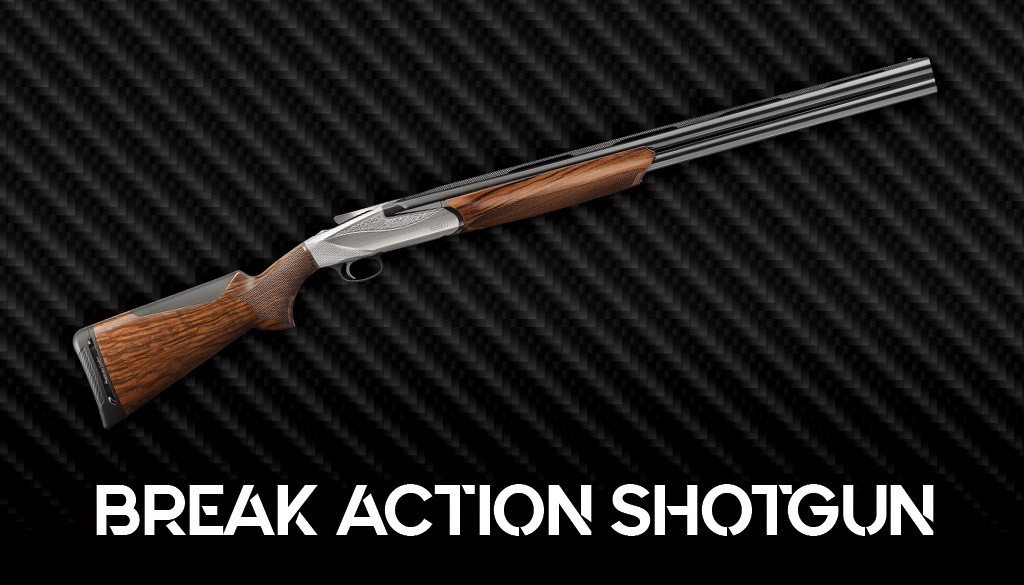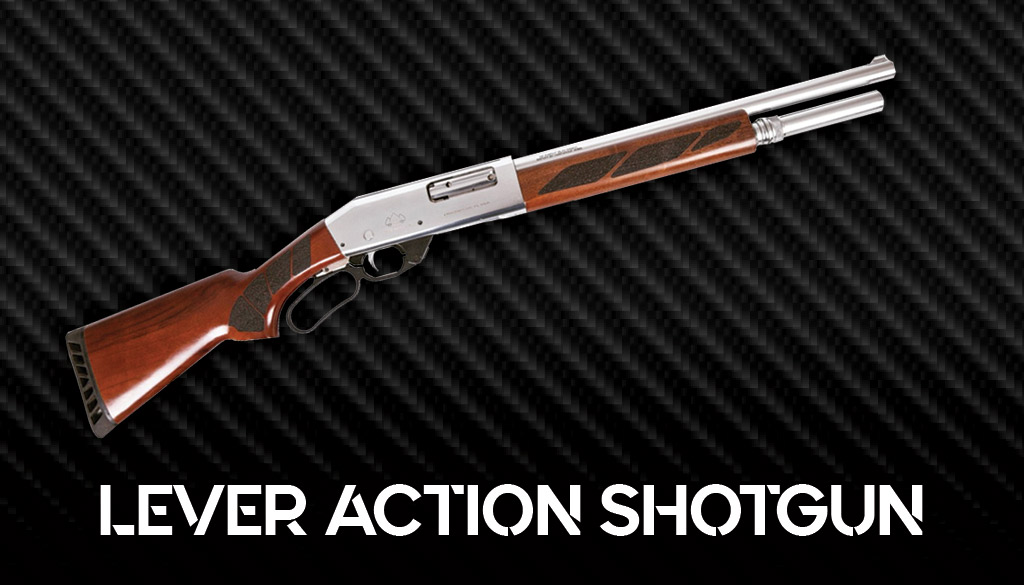

By Guy J. Sagi
Sporting clays, trapshooting, and most bird hunting are the exclusive realm of shotguns, but these versatile firearms can also be ideal for home defense, action shooting sports, and—depending on regulations—big-game hunting. Here’s a brief look at the most popular shotgun types. Let us help you make the right purchase decision and discover something new about this Swiss Army knife of firearms.
Shotgun History
History doesn’t record the name of the person who invented the first shotgun. What we do know, however, is that this long-lasting contribution to firearm design came sometime before or during the reign of England’s King Henry VIII.
The monarch had a total of six brides during his reign, but he also collected firearms. He coveted them more than spouses, because when he died in 1547, he’d amassed more than 40 shotguns, all of them tailored for bird hunting.
His shotguns were rudimentary, at best, though. Waiting for gunpowder to light in a pan, spark through a flash hole and finally ignite gunpowder in the chamber is slow. Shotshells and primers came long after Henry VIII, and it didn’t take long for designers to make the “scattergun” the efficient and fast tool it is today.
Here’s a look at some of today’s most popular types of shotguns. We’ll even go over a few of the scarcer versions you may encounter.
Types of Shotguns
- Break-Action
- Pump Action
- Semi-Auto
- Lever Action
Popular Shotgun Types: Break-Action

The Benelli model 828U is a modern take on the classic take break-action shotgun.
Break-action, double-barreled shotguns are the preferred choice for serious sporting clay enthusiasts and most trap shooters. That’s the only design you will see in an Olympic competition.
The barrel and receiver rotate apart on this hinged design, allowing the shooter to insert fresh shotshells into the chamber or chambers. Competition versions always have two barrels, stacked one atop the other—so-called over-under configuration. When both barrels are next to each other, on the same horizontal plane, it’s termed a side-by-side. The latter model’s use is more often for bird hunting, but it’s not unheard of in casual competition.
These guns usually have longer barrels to dust distant clays and hit flushing quail. That makes them less than nimble when pressed into home-defense service.
Old, Not Obsolete
Manufacturers have not overlooked the virtues of the foolproof operation, though. Side-by-side coach guns—named because they resemble the ones carried by guards atop Wells Fargo stagecoaches in the old west—are available from several companies. The barrels are shorter, and many have external hammers that require cocking before a shot. Capacity is only two shotshells, but there are situations in which it’s a great option. Leave the break-action “open,” without the hammers pulled back to the firing position, and that gun will not go off without adult effort. If the unthinkable happens, close, cock and you’re ready to hold a home invader at gunpoint until law enforcement arrives.
Single-shot, break-action shotguns are utilitarian workhorses popular to this day. They are reliable vermin/serpent slayers on thousands of farms and ranches across the nation. Most have an external hammer, which makes them ideally suited to ignore the jostles truck guns often endure.
Pump Action—Hunting, Home Defense, Competition

Remington has been producing pump-action 870 models since 1950.
Some claim the pump-action shotgun is the ultimate home-invasion deterrent. Urban legend has it the sound of that pump working is enough to send criminals fleeing. Most firearm experts explain it’s not as effective as claimed because it hinges on proximity to a perpetrator not on drugs or alcohol with decent hearing. There is no denying, however, that the 12-gauge pump-action’s rugged reliability, simplicity, and effectiveness make it a sound self-defense option.
Pumping this design’s fore-end—which is usually a wood, synthetic or rubberized piece under the barrel—back and forth ejects a spent shotshell, picks up a fresh one from the magazine, and chambers it. A shooter is now ready to take a shot if needed and repeat the action. The sound is unmistakable, further fueling the rumor.
The magazine is most often a tube running underneath the barrel and its shotshell storage capacity depends on manufacturer, length, and gauge. Aftermarket versions allow owners to install a new one to increase length/capacity.
Recently, one manufacturer introduced a version with a box magazine like those used in rifles. Shooters using this pump-action variation who run out of shotshells simply drop the empty magazine, insert a fresh one, pump once and they’re ready to go.
The Shotgun At War
The design’s effectiveness showed in the “Trench guns” introduced during World War I. Even in the muck and mire, they continued to run, and it didn’t take stateside owners long to discover that unfailing virtue. The U.S. military continues to use the design for a variety of duties.
Home-defense versions usually feature short barrels for nimble handling in tense situations. That shorter length, however, reduces magazine size.
Pump-actions with longer barrels are also popular for hunting turkeys, other birds, and small game. They are also effective on deer and other species by sportsmen using slugs or heavy buckshot loads. Widener’s has a wide selection of both from which to choose.
Popular Shotgun Types: Semi-Auto

The gas-operated Beretta 1301 semi-auto shotgun is a great option for tactical applications, law-enforcement, and home-defense.
A semi-automatic shotgun harnesses some of the energy or gas from each shot to work the bolt back and forth. Like the pump-action version, it ejects the empty shell, picks up a fresh one, and chambers it with each cycle (assuming the gun hasn’t run completely empty). Nearly all, like their pump-action siblings, use a tubular magazine running under the barrel.
The difference is that there is no shooter manipulation required to get ready for the next shot. The precise method of capturing the force required to work that action varies by manufacturers and some of the approaches are genius.
On The Hunt
Hunting versions of semi-automatic shotguns usually have longer barrels and their track record of performance and reliability spans decades. If you’re after birds, small game and even big game you can’t go wrong. These same models appear regularly on sporting clay and trapshooting fields, adding to the design’s versatility—although serious competitors nearly always carry an over-under.
A whole new breed of semi-auto shotgun appeared not long ago with the introduction of action shooting sports. In 3-gun, shooters operate a modern sporting rifle, handgun and shotgun during each match. Today, variations on that trio with a 2-gun theme are now popular.
The manufacturers responded to the high number of shots required on each stage by increasing magazine capacity. They also tweaked part of the popular shotgun types design (loading ports polished and increased in size and larger charging handles, for example). Most of these shotguns still have a long barrel, but the magazine often runs fully to the end of it—or longer—and carries a lot more shotshells. A few home-defense versions are available using the same speed-improving enhancements.
There are also box-magazine-fed semi-automatic shotguns, although they are relatively rare. Operation is the same, but once a shooter has run a magazine, inserting a fresh one is just as fast and easy as the procedure in most rifles.
Lever Action & Muzzle Loaders

Black Aces Tactical is one of several companies still producing lever-action shotguns.
You can still buy muzzleloading shotguns to this day. The nostalgic approach has gained traction with hunters who prefer the added challenge during turkey season. Bolt actions even exist, although they’re hard to find, even in ancient pawn shops. Drillings, where one barrel/chamber digests shotshells and the other rifle cartridges remain popular in Europe, not stateside.
If you’re a Steve McQueen fan and loved him in the TV series “Wanted: Dead or Alive,” you can even pick up a lever-action shotgun that closely resembles his famed mare’s leg. Manufacturers produced many other lever-action models through the years. Some of the new models are, if nothing else, much more selfie-worthy.
Rifles may get all the fame, but there’s no shortage of shotgun options. Combine the right popular shotgun types with the proper shotshell for the job and there’s no doubt this versatile firearm can perform double, or triple duty, with reliability.


